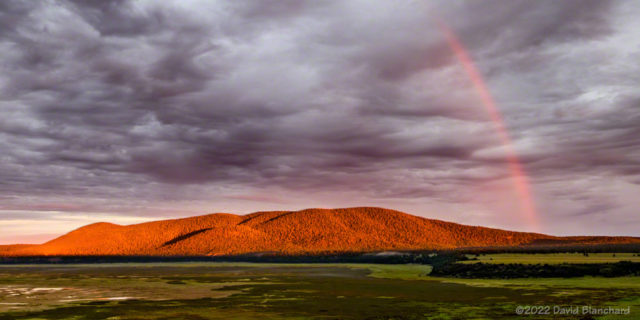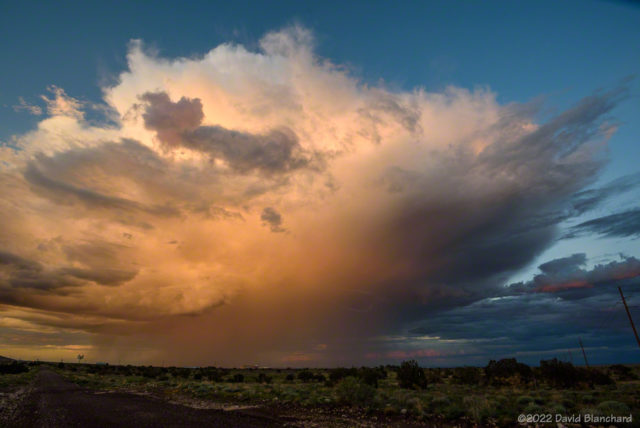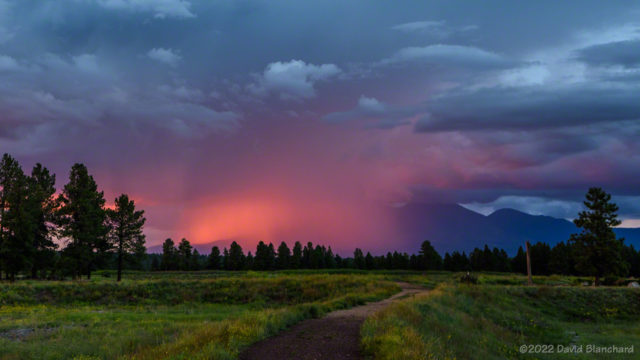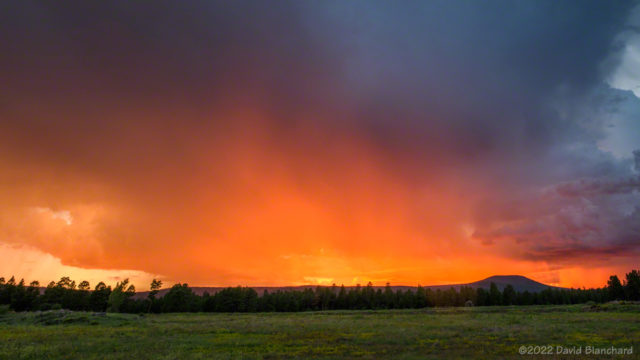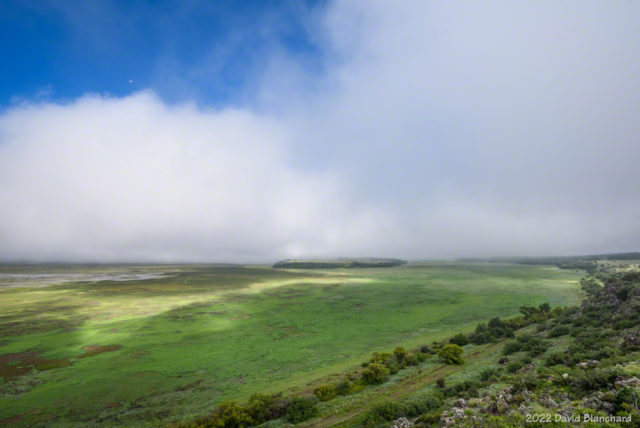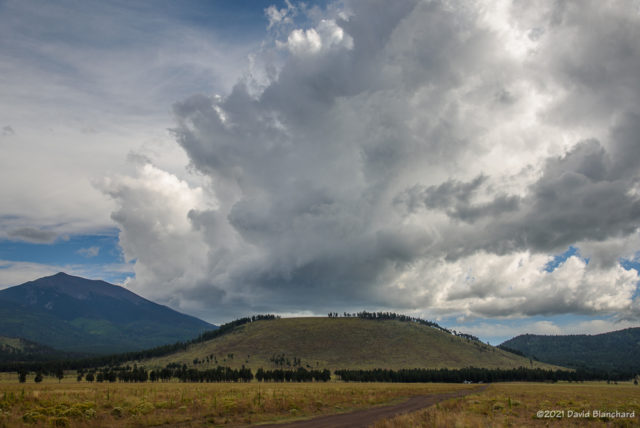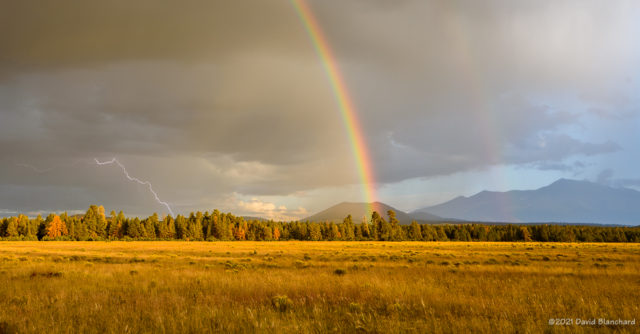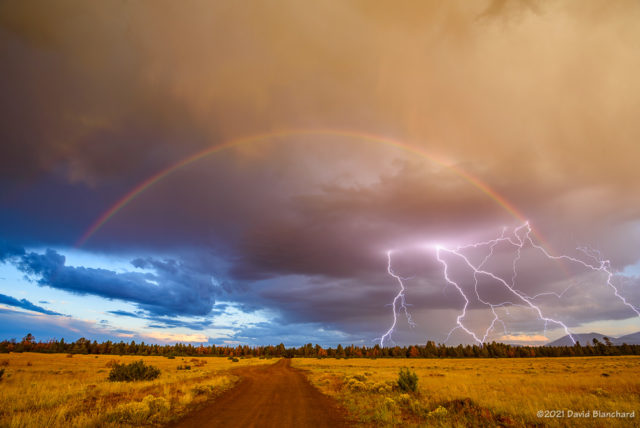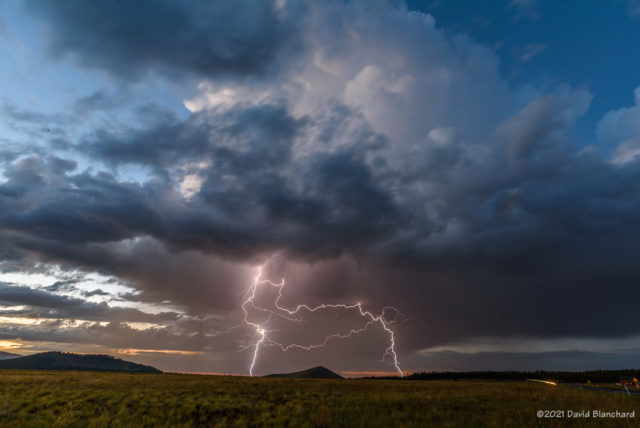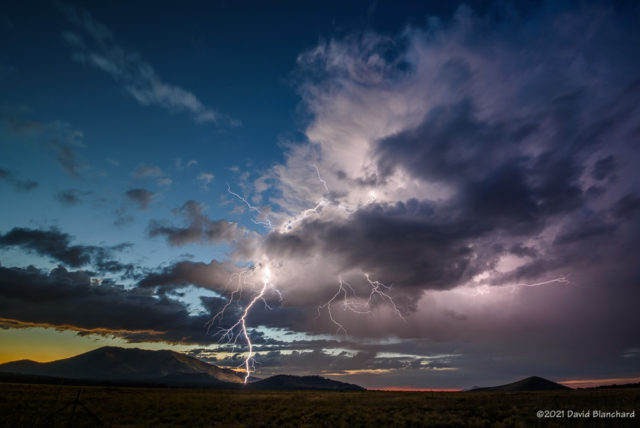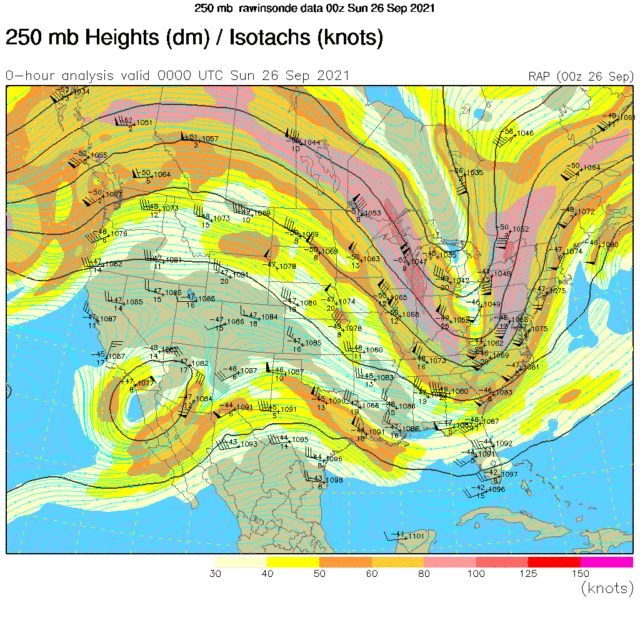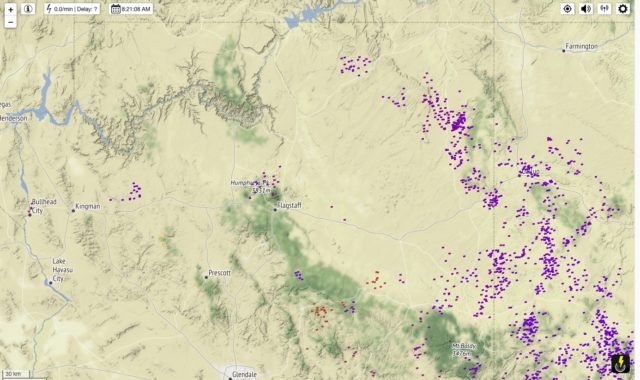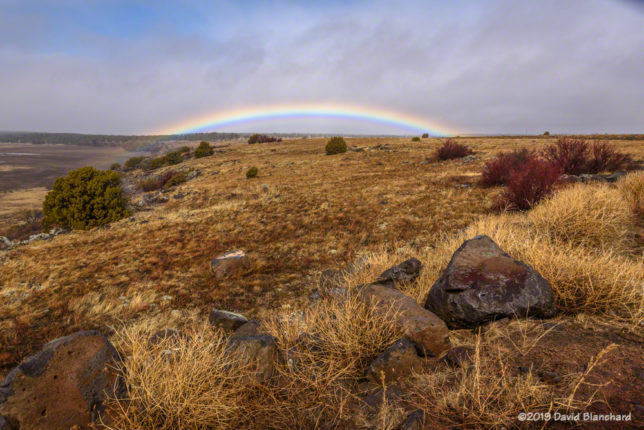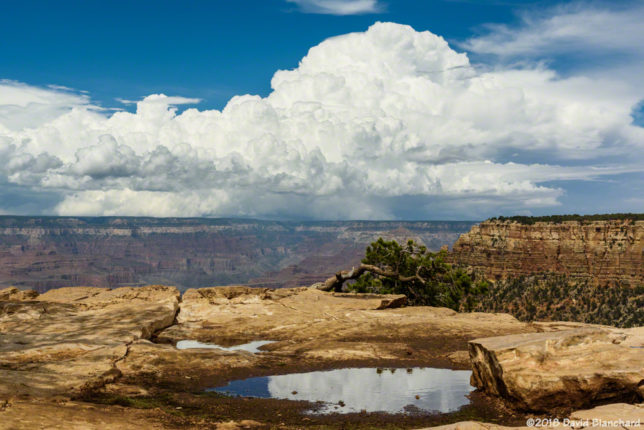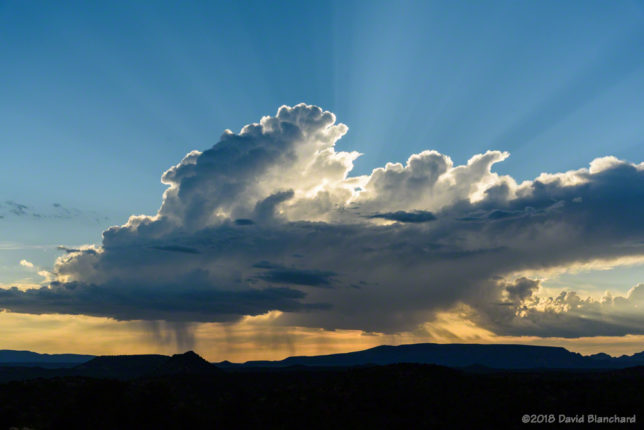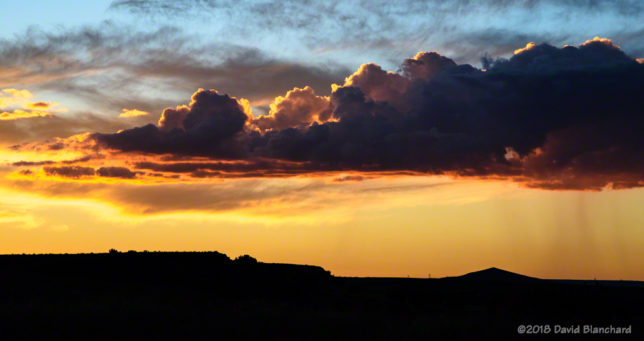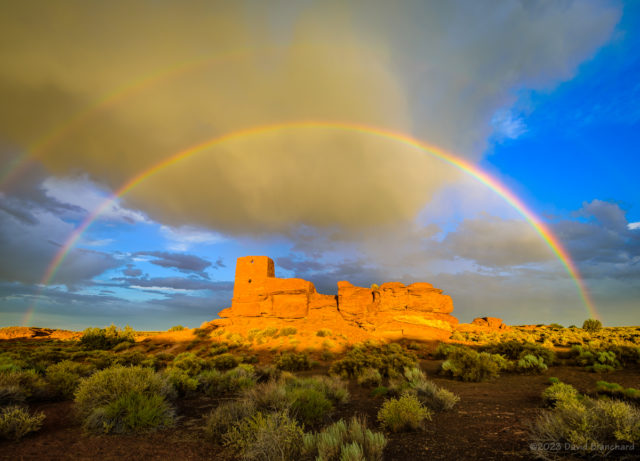
The North American Monsoon (NAM) has been slow to get started this year. A general rule of thumb is it gets going around the 4th of July and is considered late (but still normal) by mid-July. Likewise an early start can occur as early as mid June–as it did last year.
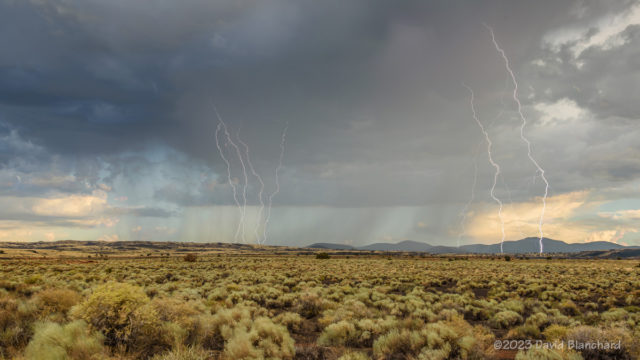
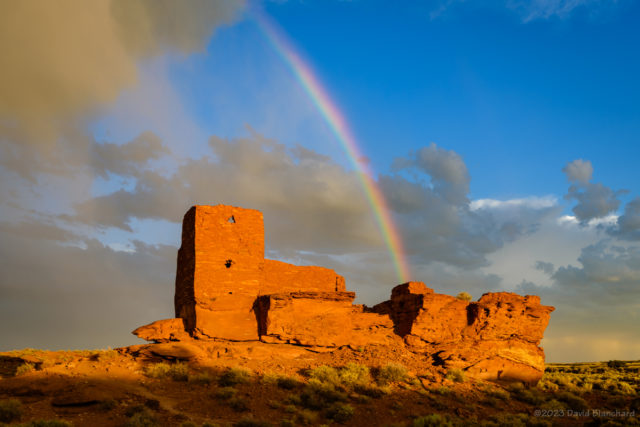
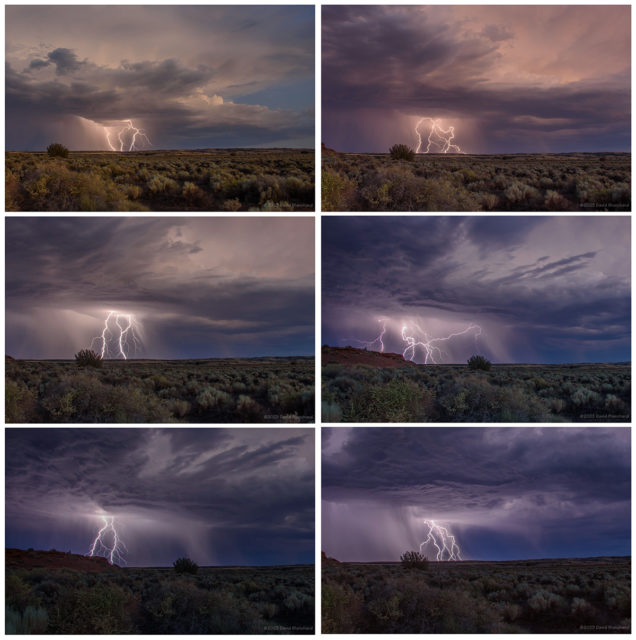
During the month of July the GFS weather forecast model consistently showed the NAM getting started “Real Soon Now.” But the target was always several days away. Finally, late in the month the rains arrived as an inverted trough (IVT; def. 2) moved across Arizona.
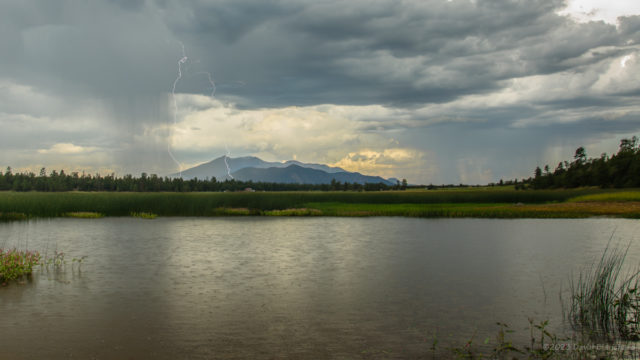
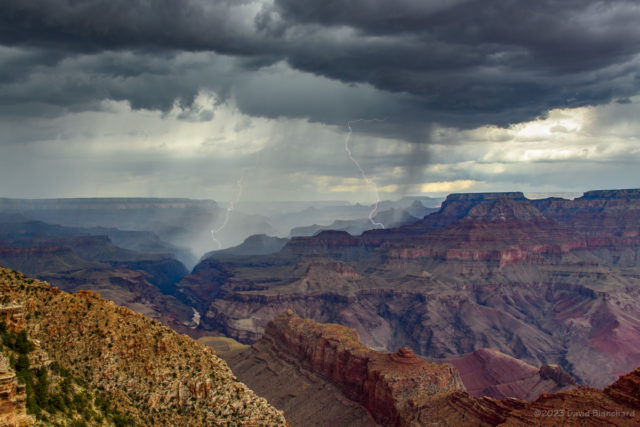
There have been some photogenic storms. A little over a week ago I traveled to the South Rim of Grand Canyon hoping to get some lightning. Although there were some flashes they were far away. On the other hand, the sunset was pretty good. A band of clouds just above the horizon effectively blocked the Sun at my location while beams of light were getting under the clouds and into the canyon farther to the west. The alternating beams of light and shadow were pretty nice.

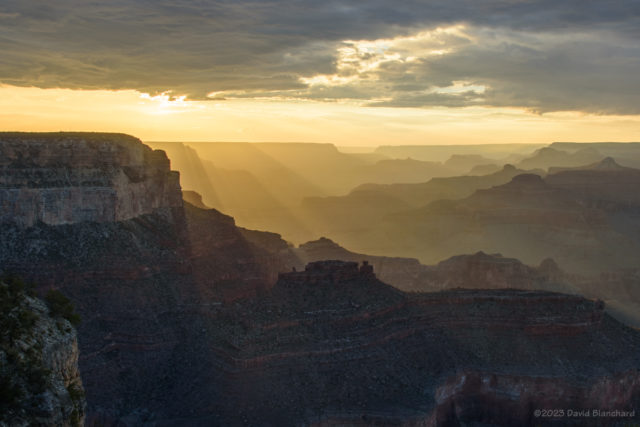
The following day I went to Wupatki National Monument in hopes of lightning and rainbows. There was a late afternoon storm that moved towards the Monument and produced a lot of lightning. As it got closer it weakened but was still dropping rain and a short time later a beautiful, full double rainbow appeared. All I needed to do was position myself so that I could get the rainbow arch to frame Wukoki Pueblo.
Time lapse of convection developing over the San Francisco Peaks with Marshall Lake in the foreground.
A new storm formed to my southeast as twilight came on and began to produce a lot of lightning. This was the 3rd act of the day and it was a good one.
Later in the week I took a short drive to Marshall Lake near Flagstaff to time lapse the early stages of convection over the San Francisco Peaks–and with some reflections in the waters of the lake. A few lightning bolts landed near the peaks adding to the show.
A few more trips to Grand Canyon rounded out the month.
And, now, the monsoon is on hiatus again.

